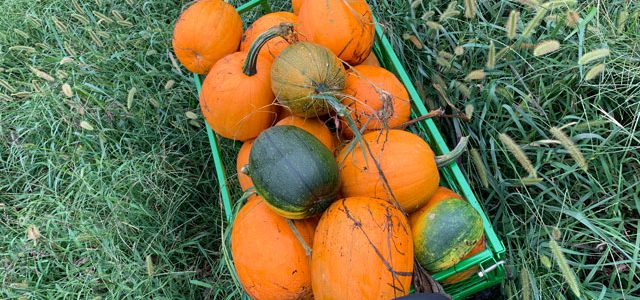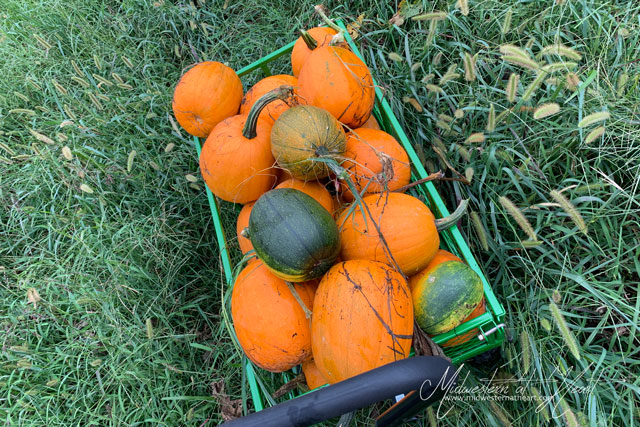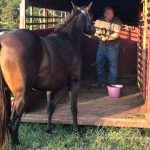Pumpkins
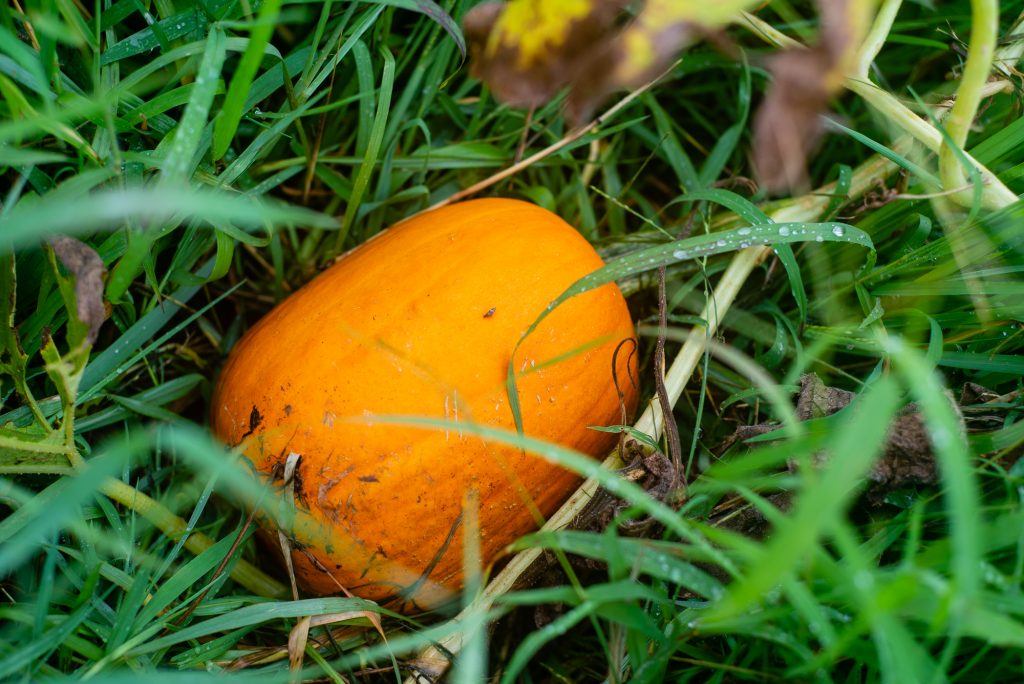
As the summer draws to a close and fall takes over, it’s finally time to harvest your summer’s hard work in the shape of a pumpkin. I have spent a lot of time this summer researching pumpkins. This is the first year I’ve tried to grow pumpkins. In the past, I’ve dumped pumpkin seeds in a fence row and had voluntary pumpkins grow, but now is time to learn about pumpkins.
I planted 2 types of pumpkins this summer.
The first was from seed.
When Jody was here helping plant marigolds and my Blackberry Bush, we also planted pumpkin seeds. In the past, I’ve had good luck just throwing pumpkin guts away in the fall after carving jack-o-lanterns. They wind up in a fence row. Come next spring/summer plants start growing. But a pumpkin is 90% water and if you don’t water them in a dry summer, they won’t survive.
The second type of pumpkin was a store-bought plant. I bought it at the local farm store. It was a Bonnie Plant – Pumpkin Heirloom Jack-O-Lantern.
Seeds versus Plants
They say that it is best to plant a pumpkin from seed versus buying a plant. Plant the seeds in full sunlight. When you plant the seeds, sow it with some diatomaceous earth to detour pesky bugs when the plants start to emerge. It is best to sprinkle it around throughout the season to help those pesky bugs steer clear. Once the seeds sprout, it is best to water early in the morning to avoid powdery mildew buildup.
Make sure to fertilize pumpkin plants all summer long.
On average pumpkins take 100-110 days to harvest. It is best to get pumpkins in the ground in early June for an October harvest.
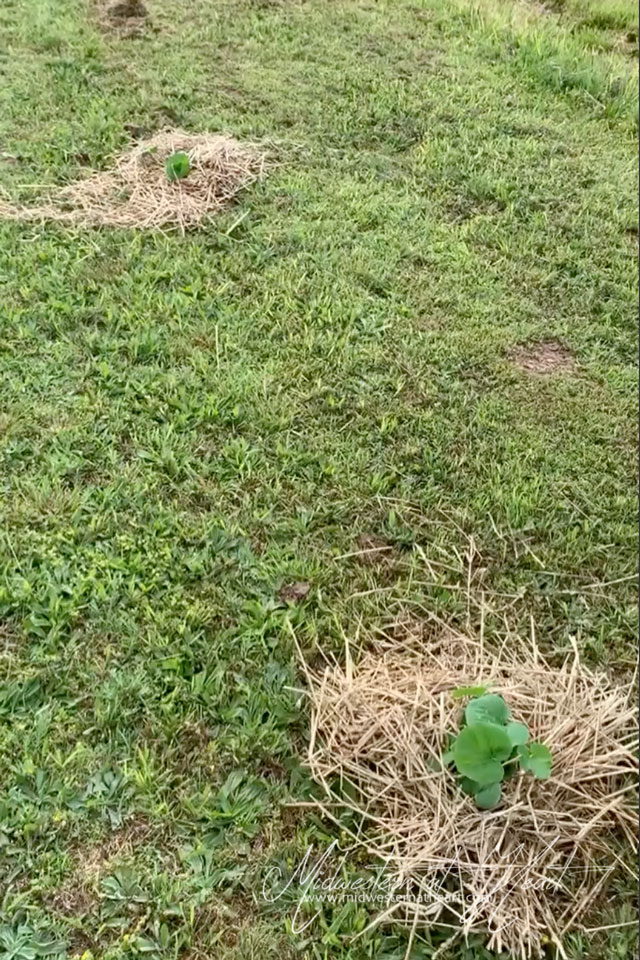
What to plant pumpkins next to:
Corn, beans, and pumpkins are a great combination. The corn provides support for the beans to grow up while the foliage of the pumpkin provides ground cover to keep weeds at a minimum. Melons and squash are other good things to plant pumpkins next to.
Based on the area’s average last frost date, it is best to plant pumpkins between May 15 and June 15. I was right in the middle of that time frame.
Make sure to give plenty of room between pumpkins. When they say 5 feet, go 6 just for good measure.
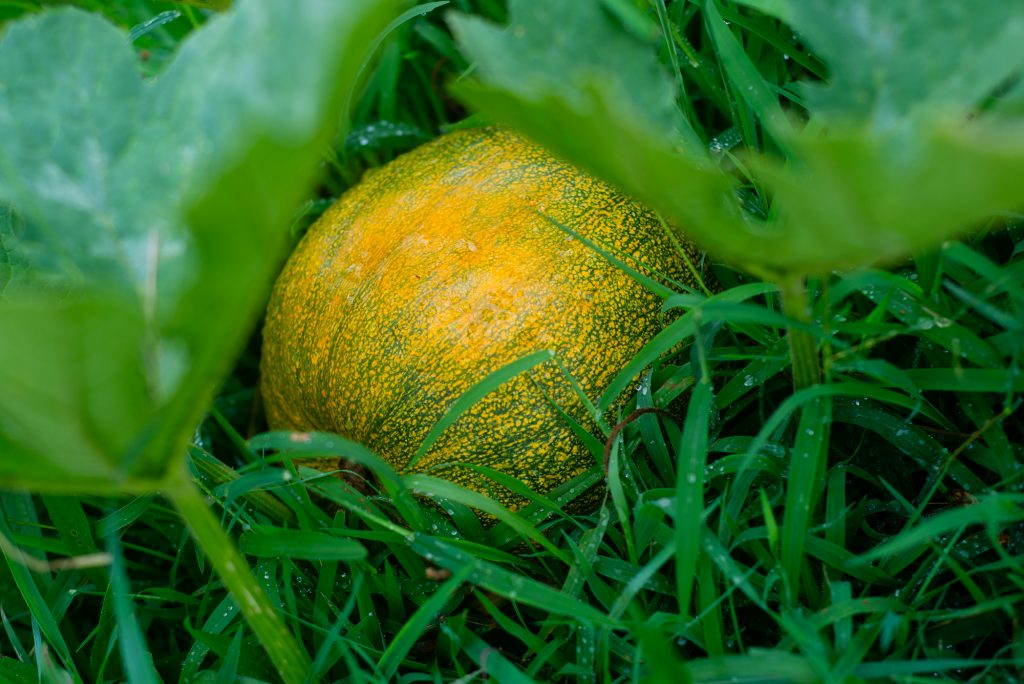
DO NOT plant pumpkins next to:
Avoid planting root crops, such as beets, onions, and potatoes, near pumpkins, which may disturb sensitive pumpkin roots when harvested
How Many Pumpkins will Each Plant Produce?
If you’re getting into planting pumpkin and want to know how many pumpkin plants you can grow per plant, then the simple answer is 3 to 6 pumpkins. Some miniature varieties can yield 10 to 12, while the large variety can produce 1 or 2 pumpkins.
How to Tell When a Pumpkin is Ready to Harvest
- Pumpkins are ready to harvest when they have reached a deep orange color (or color of variety planted) and the rind is hard.
- To test the rind, jab your fingernail against the outer skin, or rind. It should be strong enough to resist puncture.
- Also, you can tell a pumpkin is ripe if you hear a hollow sound when you thump on it.
- Pumpkins are ready to be harvested usually mid-fall.
- Make sure to bring pumpkins in before the first frost or when temperatures plan to stay below 40˚F for extended periods of time.
- The stem will start to die off and turn brown.
- There are little curlies on the stem near the pumpkin, those will also start to turn brown.
What to do if you have to Harvest a Pumpkin Early
Sometimes you have to pick a pumpkin before it is ready. Reasons… squash bugs, disease, it falls off the vine, early frost warnings, etc. There are lots of reasons. But, don’t let that scare you off. You can easily still ripen a pumpkin.
Place in a dry, warm place (temps above 75˚F or higher is best), with sunlight, is even better. Store until the pumpkin has ripened. This can also help with curing a pumpkin.
Storing Pumpkins
You can increase the shelf life by curing your pumpkins before storing them. Gently clean the pumpkins by brushing off any excess dirt. Then place them in an area with a temperature of about 80-85˚F with 75 to 80% relative humidity for 10 days to 2 weeks. Curing will harden the skin, heal wounds, ripen immature fruit, and, importantly, improve flavor.
After they have been cured keep your pumpkins in a cool location, about 50-60˚F. Keep out of direct sunlight with plenty of good air circulation. Stored this way, they should last up to 3 months.
Or you can can the pumpkins or make pumpkin purée.
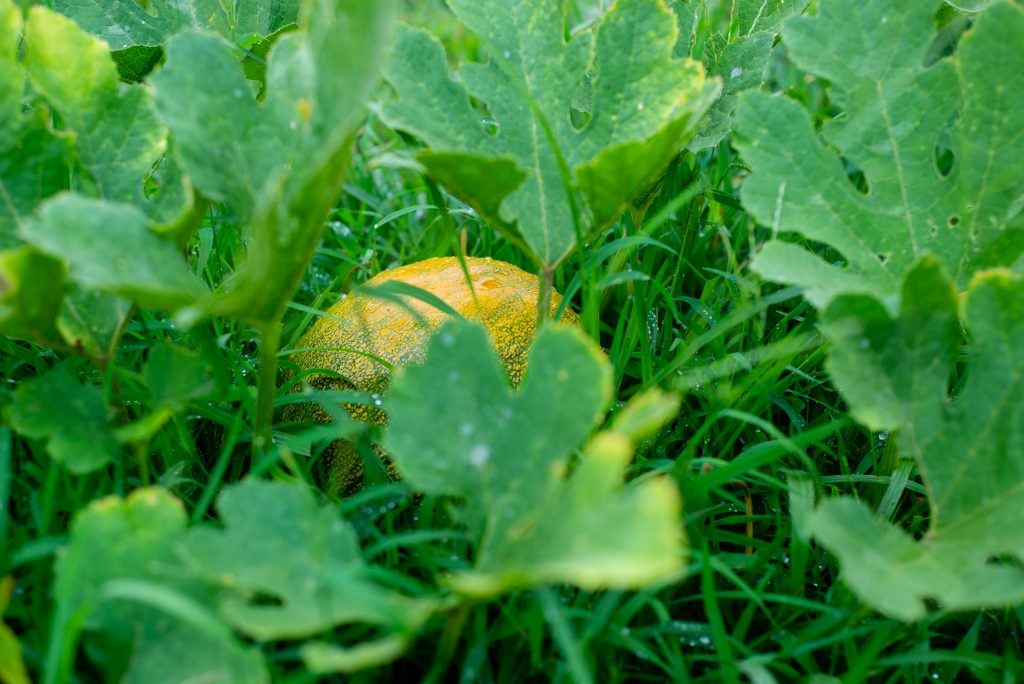
Fun Facts About Pumpkins
- Wear gloves when working in the pumpkin patch since the vines are prickly.
- Rotate pumpkin plants to a new location in the garden each year.
- According to the Genius World Records, Beni Meier of Ludwigsburg, Germany set the record in 2014 for growing the heaviest pumpkin, which weighed 2,323 pounds.
- Pumpkins not only appear in the book (and movie) Cinderella but also Washington Irving’s “The Legend of Sleepy Hollow,” and Shakespeare’s “Merry Wives of Windsor.”
- Pumpkins were used as replacement food for European staples in colonial America. Once the trade was established with Europe, the pumpkin almost totally disappeared from the American diet. It then became a staple in the livestock diet.
- When I say Pumpkin Pie, people think Thanksgiving… But the pilgrims probably didn’t serve this at the First Thanksgiving… Pumpkin was used in savory dishes as a grain substitute.
- Pumpkin seeds contain more protein than peanuts.
- There are 45 different varieties of pumpkins.
